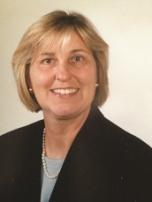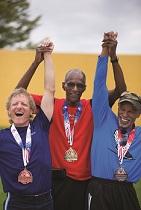
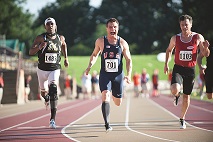
NSGA offers its national event every other year (The 2015 National Senior Games Presented by Humana will be in Bloomington/Minneapolis/St. Paul, Minnesota). It is also comprised of 49 members and one associate member, who conduct state or national multi-sport competitions, which serve as qualifiers for the National Senior Games.
As a side note, we do define seniors as anyone age 50 and up. That might come as a surprise to some people, and there are those people who are age 50, for example, and who don’t initially want to be called seniors. We try to educate the community about the fact that the term ‘senior’ doesn’t necessarily mean old. A senior in high school or college, for example, is just someone who has been there longer and has more experience. That’s the way we think of the participants in our games. It’s a different definition, and a different mentality, and maybe it takes some getting used to. Of course, it also took some time at first for people to get used to the idea that an individual does not need to give up being healthy and active simply because he or she is aging, so perhaps in time, this perception of the term, senior, will change as well.
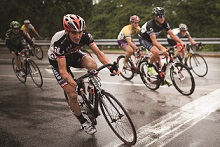
Good Facilities: We want sports venues that are in top shape for our events. It keeps people safe, keeps athletes and spectators happy and makes for a much more positive sports experience all around. Our events on the national level are all summer games; our sports are archery, badminton, basketball, bowling, cycling, golf, horseshoes, pickleball, racewalking, racquetball, road racing, shuffleboard, softball, swimming, table tennis, tennis, track & field, triathlon, volleyball and three non-ambulatory sports – bowling, horseshoes and shuffleboard. That calls for a huge variety of facilities, both indoor and outdoor, but we want them all to be well-maintained and ready for competition and spectators.
Proximity to Lodging: Our athletes really like it when they have accommodations close to the events they’re going to be taking part in. Ideally, they want to be within walking distance of their hotel, particularly since many are flying in for the event. Again, close proximity is something that is popular among athletes and spectators everywhere, and it makes sense for us to look for it when we’re planning for our seniors’ competitions.
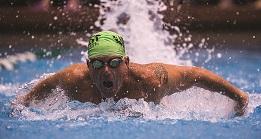
Generally, we try to put our Athletes’ Village at the convention center where we’re doing our registration. We have vendors who have exhibits and booths, so it is an expo as well. There are always all kinds of things going on that make this an interesting and fun place for people to be. If athletes are not competing, they can always come to the Village and relax and socialize.
Connectivity: The Athletes’ Village and Expo also has an area that is a cyber café. We want people to be able to check their e-mail, charge their mobile devices, get online for whatever information they need and so forth.
Preparedness: People sometimes ask us if we make special arrangements for medical or emergency services because we’re working with seniors. We do have plans in place for first aid and emergency services, and of course we’re well-connected with information on local hospitals – much the same as all sports events should be.
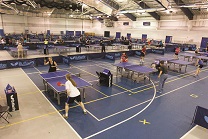
Up until now, we have focused on some of logistics and planning we use when we hold our national events for seniors, and as we’ve seen, we have a lot in common with planners of many other sports events. But we have learned over the years there are some things that make our senior athletes – and our Games – unique, and set them apart from similar events that might be held for another age group. It’s important to understand those things because it allows us to create a better event:
Understanding the Athletes’ Different Philosophies: Different people come to compete in senior games for very different reasons. Some people are very athletic and very competitive and they’re focused on winning, as you would expect athletes to be. At the same time, though, there are plenty of participants for whom this is much more of a social occasion. They come to take part in the games, but they have also made friends over the years, and they enjoy spending time with those friends. They love the fact that they can stay healthy and have fun. To them, it’s the overall experience that is so great, not just the competition itself.
Some people come to sports later in life. Some make the decision to be more active because of health concerns, while others simply want to try something new. We have people who until recently, never picked up a bowling ball or a softball. But they tried it, qualified at their state games and came to nationals to play.
The stories we hear are another part of what sets senior athletes apart from others. We had one woman who told us that she had grown up in a time and in an area where there really weren’t any sports for girls. She has always wanted to play basketball, so not she is 60 and she is playing and promoting physical fitness as an adult. People don’t necessarily have to be out there winning medals to be an inspiration to others.
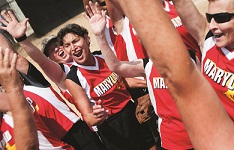
Medal Ceremonies: What would a national games event be without a medal ceremony? We have medal ceremonies for our winners at each athletic venue.
Mission: Part of our overall mission is health, wellness and fellowship. Those things are all so important, but they are especially important at this age. We provide opportunities to stay active and fit and to have fun doing it.
The Athlete Population is Growing: In 1987, at the first Games, a total of 2,500 athletes participated. As the years passed, that number increased, and it has kept right on increasing. The most recent event welcomed more than 11,000 athletes. Expect that figure to keep going up as the years go on. (And of course, an active aging population is a healthy one; insurance companies can be happy about those numbers).
On the whole, the most important consideration in planning for senior athletes is to understand that for them, it’s more than just a competition. It’s about building relationships and staying healthy. A successful event will provide opportunities to help them do both.

